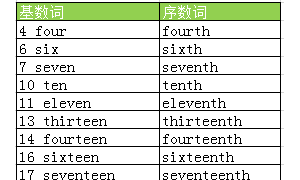周四,一场吞噬了包括北京在内的六分之一的中国的沙尘笼罩着天空。这是今年全国最大的一次沙尘天气,也是北京两年来最大的一次。
A sandstorm that engulfed one-sixth of China, including Beijing, turned the sky hazy on Thursday as particulate matter readings soared.
It was the nation's strongest sandstorm this year, and in Beijing, it was the strongest in two years.
As of 8 pm on Thursday, 62 outbound flights and 94 inbound flights at Beijing Capital International Airport had been canceled or delayed, airport officials said.
Traffic authorities in affected cities issued warnings about low visibility on the road, but most major highways appeared to remain open through the day.
The health authority cautioned about eye discomfort and respiratory and cardiovascular risks, and it recommended that people protect themselves, for example with face masks.
Beijing is expected to see relief on Friday night, though the sweeping sandstorm will continue to affect other areas until Saturday, according to the National Meteorological Center.
Large amounts of dust and sand blowing in on strong winds from Mongolia and the Inner Mongolia autonomous region have swept large areas in the northwest and north since Wednesday, driving air pollution indexes to hazardous levels and lowering visibility, said Zhang Bihui, a senior meteorologist at the weather authority.
The sandstorm pushed air quality indexes in many cities to the maximum reading of 500, including in Beijing. The concentration of PM10 particulate matter had soared to 1,000 micrograms per cubic meter at many monitoring stations in the capital as of 6 pm on Thursday, according to the municipal environmental monitoring center.
PM10 had not reached 1,000 in the capital for two years, since April 15, 2015.
While the sandstorm had widespread effects, it only reached the second of five levels used to measure dusty and sandy weather. It was classified as "severely dusty/sandy", a category where visibility is lowered to between 1 and 10 kilometers.
In Beijing, visibility was limited to about 1 to 2 kilometers on Thursday, but it is expected to improve somewhat to 5 km on Friday, and "the sandy weather is forecast to end on Friday night", said Ma Xiaohui, chief forecaster at the Beijing Meteorological Center, on Thursday.
But in areas like the Xinjiang Uygur and Inner Mongolia autonomous regions, and Gansu and Shaanxi provinces, the sandstorm was expected to last until Saturday, said Zhang.
"In some regions of Inner Mongolia, the 'super strong sandstorm' has lowered visibility to 300 meters, with PM10 readings exceeding 2,000 on Thursday," said Zhang, adding that in part of the Inner Mongolia autonomous region, the super strong sandstorm is forecast to linger for two days.
This year, the vast northern region has been hit by dusty and sandy weather seven times, which is below the annual average of 8.4 times in that period over the past decade, according to the center.
"The expanded vegetation cover rate in deserts and other sand-source regions in China from planting trees helped reduce the number of sandstorms," Zhang said. "Also, global climate change has slowed the wind in recent years, which is another major reason."
But this week, the sand and dust has been carried aloft by upper air currents, 5,000 meters high, so vegetation cover had little effect, he said.







